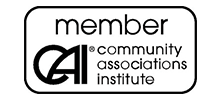Recycling
Recycling Services
Founded in 2002 | Certified Women-Owned Business | Free Estimates
Founded in 2002
Certified Women-Owned Business
Free Estimates
This is a placeholder for the Yext Knolwedge Tags. This message will not appear on the live site, but only within the editor. The Yext Knowledge Tags are successfully installed and will be added to the website.
Hours:
This is a placeholder for the Yext Knolwedge Tags. This message will not appear on the live site, but only within the editor. The Yext Knowledge Tags are successfully installed and will be added to the website.
Focused on Being a Good Steward of the Environment
Being a good steward of the environment is at the core of what we do every day through providing safe and sustainable waste and recycling collection services. That is why we are doing our part to help ensure more recyclables have a better chance of actually being recycled into new products.
It is important all stakeholders in the recycling process understand the “why” behind our recycling programs. Two primary questions being asked are:
- Why is the reduction of contamination so important?
- Why are glass items and plastic bags being removed from the recycling program?
The answers to these questions are not simple and include such topics as the industry’s transition from dual-stream to single-stream recycling collection programs, the lack of domestic processors, volatile commodity markets, international trade, the growing volume of single-use containers, and human behavior. But the one common thread in each of these topics is the impact contamination has on the long-term viability of recycling programs.
Contamination is a real threat to sustainable and effective recycling programs.
There are two primary forms of recycle contamination; source-generated and process-generated. Most people can easily identify and understand the problems of source-generated contamination. These are items placed in the recycle cart that plainly shouldn’t be there, like food waste, baby diapers, yard waste, and electronics (see below for a more inclusive list). This type of contamination accounts for approximately 20% of what is placed in the average household recycle cart. So that means, on average, one of every five items placed in a recycle cart should not be there and is jeopardizing the future of the other 80%. Contamination degrades and devalues the highly recyclable items (paper, cardboard, plastics, tin and aluminum cans), increases the time and cost to process them, and often ultimately results in the desirable materials being landfilled.
This is why you may have heard the recycle slogan, “When in doubt, throw it out.”
The second form of contamination (process-generated) is less well known and, for that matter, much less talked about. Process-generated contamination is the result of low value and/or difficult to process recyclables (i.e. broken glass and plastic bags) making their way into the bales of sorted recyclables. It is primarily a result of the single-stream recycling process.
Single-stream collection allows residents to commingle the various types of recyclables into large 95-gallon carts for curbside collection. The commingled recyclables (and any contamination) in the carts are dumped into a collection truck, compacted for operating efficiencies, and then delivered to a material recovery facility (MRF), a.k.a. recycle sorting facility. The sorting is conducted with large, complex machinery and manual labor. Because the commingled materials have been compacted by the collection trucks, dumped on a concrete floor, and then handled by large industrial front-end loaders before the sorting process even begins, any contamination (think food waste and diapers) and broken glass are thoroughly mixed and embedded into the fibers of the desirable recyclables (think paper, cardboard, and plastics).
Further complications occur when plastic bags (grocery shopping bags and plastic film) wrap around and clog the many moving parts of the sorting machinery. Multiple times a day, the system must be stopped, and employees must crawl into the machinery to manually cut out the plastic bags. This is not only dangerous and time-consuming, but the plastic bags (or pieces thereof) often make their way into the final bales of sorted recyclables. To prevent this, please return plastic bags to the grocery store each shopping visit. Most grocery stores have a plastic bag receptacle near their store entrances. Video on challenges of plastic bags.
So why is this a big deal?
Well, for starters, contamination (source-generated and process-generated) often causes recyclables to be landfilled, and nobody wants that! Secondly, because significant contamination ultimately makes its way through the sorting process into the final bales of paper, cardboard, and plastics, the bales are less valuable and, in some cases, worthless to the end-users who process those bales into new products.
The negative effects on available recycle markets and the environmental consequences of contamination.
For years, highly contaminated bales of US generated recyclables have been shipped to foreign end users who tolerated the high levels of contamination. But since 2018, more and more end users are rejecting the bales coming from the US (Google “china recycle ban”), and as a result, fewer outlets are available for the growing volumes of materials being generated. This has not only caused a severe reduction in prices end-users are willing to pay for the various commodities, but worse, has resulted in a disturbing amount of illegal dumping, stockpiling, and other harmful environmental impacts.
Isn’t recycling glass a good thing?
The environmental benefits of recycling glass and the overall viability of recycling programs are typically improved when glass is kept separate from the rest of the commingled recyclables. The impacts of recycling glass through a single-stream (commingled) sort system are significant when considering such factors as the potential contamination of the higher value fiber recyclables, the miles and fuel needed to transport the heavy glass to the nearest glass processing plant (which for San Antonio is in Midlothian, TX), the safety concerns for the MRF employees who must hand sort around broken glass, the additional wear and tear glass causes to the expensive and complex MRF machinery, and the overall high cost to sort, ship, and process the various types of glass. It could be argued the carbon footprint of the trucks and equipment necessary to collect, sort, ship, and process used glass into new glass products offsets most, if not all, the environmental benefits of recycling glass, especially without a local glass processing company and if the glass causes other higher carbon footprint materials not be recycled.
Glass is made from abundant and readily available sand (primarily silicon dioxide, soda ash, and limestone). It is inert, and as a result, is not a concern to our air, water, or land. When comparing the environmental benefits of recycling, glass is typically last among all common recyclables. In many cases, the best environmental option, if you want to recycle your glass bottles and jars, is to take them directly to a glass collection center so the glass can be handled separately.
So, in summary, the future of recycling needs your help! While it may seem counterintuitive, the best thing you can do is eliminate as much contamination as possible from your single-stream recycle cart, including glass and plastic bags. As contamination levels improve, MRF’s better adapt to the real-life sorting challenges of single-stream recycling, and producers and end-users become more responsible with the increasing global volume of consumer materials, Tiger Sanitation will continue to do our part to ensure more of your materials are recycled in a safe and sustainable way.
Call today for a free estimate.
(210) 333-4287
(210) 333-4287
What is acceptable?
- Cardboard (clean and dry)
- Newspaper, loose office paper, and magazines
- Plastics 1 through 7 (no food residue)
- Aluminum beverage cans
- Steel and tin cans (no food residue)
What is NOT acceptable?
- Glass - (please note that glass of any type is no longer acceptable for our single-stream recycling)
- Food waste (please either compost or place in the trash)
- Food contaminated paper, cardboard, plastics, or cans (including pizza boxes)
- Textiles (rugs, carpet, bedding, or clothes)
- Diapers and other baby or pet waste
- Electronics, hoses, extension cords, holiday lights, clothing hangers
- Plastic bags of any type, film, sheeting, or membranes
- Yard waste, dirt, wood, concrete, brick, or other construction debris
- Polystyrene foam and packing materials
- Scrap metal, auto parts, and tires
* When in doubt, throw it out. *
(Sometimes the best recycle tip is to not try to recycle everything!)
OUR ADDRESS
,
This is a placeholder for the Yext Knolwedge Tags. This message will not appear on the live site, but only within the editor. The Yext Knowledge Tags are successfully installed and will be added to the website.
HOURS
This is a placeholder for the Yext Knolwedge Tags. This message will not appear on the live site, but only within the editor. The Yext Knowledge Tags are successfully installed and will be added to the website.
HOURS
This is a placeholder for the Yext Knolwedge Tags. This message will not appear on the live site, but only within the editor. The Yext Knowledge Tags are successfully installed and will be added to the website.
CONTACT US
This is a placeholder for the Yext Knolwedge Tags. This message will not appear on the live site, but only within the editor. The Yext Knowledge Tags are successfully installed and will be added to the website.
This is a placeholder for the Yext Knolwedge Tags. This message will not appear on the live site, but only within the editor. The Yext Knowledge Tags are successfully installed and will be added to the website.
Se Habla Español
This is a placeholder for the Yext Knolwedge Tags. This message will not appear on the live site, but only within the editor. The Yext Knowledge Tags are successfully installed and will be added to the website.
Hi. Do you need any help?
Privacy Policy
| Do Not Share My Information
| Conditions of Use
| Notice and Take Down Policy
| Website Accessibility Policy
© 2024
The content on this website is owned by us and our licensors. Do not copy any content (including images) without our consent.









Share On: